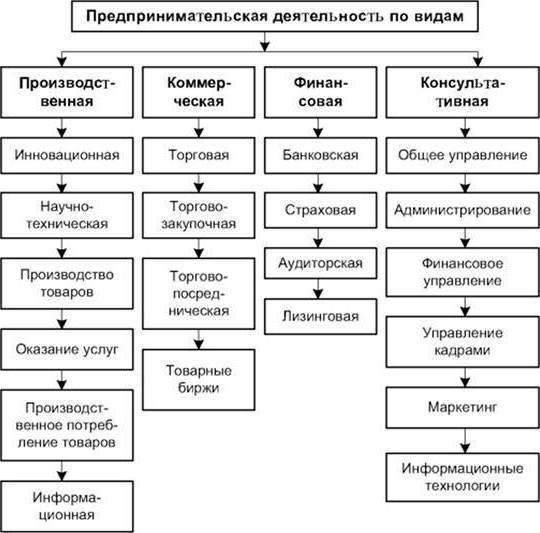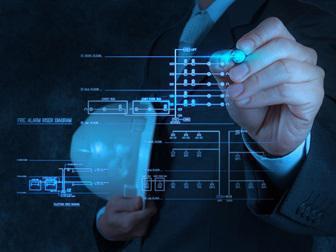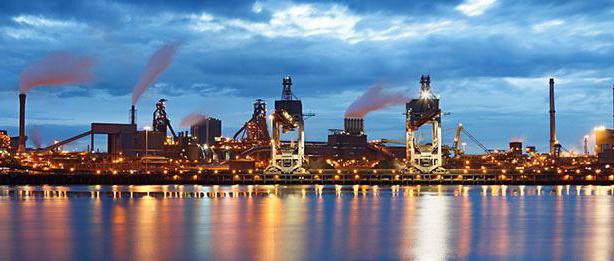One of the most common activities is manufacturing business. It is here that certain values are created, various services are provided, work, goods and almost all products are produced.

Functions
Naturally, the main defining function that industrial enterprise has is considered to be production. All the others only accompany it and the additions matter - transportation, storage and the like. Industrial entrepreneurship includes scientific, technical and innovative activities, as well as directly reproducing services and goods that will be used in future production.
The entrepreneur approaches the main function of production gradually. First you need to solve a lot of issues that specify this production enterprise: what exactly will be done, what steps need to be taken in order to get everything that is needed for this activity. Therefore, a novice entrepreneur should research the market, conduct market research, study demand.
Stages
The next step is to lease or purchase factors of production. The stages of production entrepreneurship involve the gradual organization of labor, production assets, information factors. Production assets are of several types. The main ones are buildings, equipment, power machines, transmission devices, various constructions and the like. Revolving production assets consist of basic and auxiliary materials, raw materials, fuel and energy resources, containers and so on.
The workforce is organized through advertisements or labor exchanges, employment agencies, and also through acquaintances and friends. Industrial entrepreneurship includes the mandatory sale of goods, services or material values. Therefore, further the most important factor is information, with the help of which the methods of attracting labor, financial and material resources will be clear, the situation in the sales markets of those products or those services that are planned to be clarified.

Factors
The development of industrial entrepreneurship is influenced by various factors that can be divided into technological, economic, political and legal, sociocultural, institutional, natural and demographic. Each of these types of factors can be divided into many areas. For example, economic include the level of development of markets and their scale, the size of solvent demand and incomes of the population, competition in all sectors, national currency rates and the like.
Each of these factors has a huge impact on the entrepreneurial initiative and the business itself. Technological factors determine the state of the material and technical base and the level of scientific and technological progress, legal and political - the relations between the state and society, as well as processes that allow you to make important decisions, the level of development of legal awareness and the legal framework in the country. All this and much more must be taken into account by an entrepreneur if he is building a production enterprise. Stages and types of factors affecting the development of a business should be appropriately and timely made into plans when they are adjusted.
Marketing
To identify the need for manufactured goods, services or material values, to determine the demand for them, it is necessary to make contact with potential buyers, consumers, wholesale and retail or wholesale trade organizations. All types of entrepreneurship - production, commercial, financial - cannot do without marketing. Numerous negotiations are being held, the crown of which is a contract concluded by future buyers and the entrepreneur. If a contract is concluded, entrepreneurial risk is minimized; if only an oral agreement is in force, production activities may not succeed at the implementation stage.
Industrial entrepreneurship includes the production of goods, the provision of certain services, the performance of work, information support, the creation of spiritual and material values. Commercial entrepreneurship differs from production in that this activity relates to trade and procurement, trade and intermediary operations. The financial sector is insurance, audit and financial markets. As a service develops and grows consulting business, that is, management consulting. And not one of the types of activity - manufacturing, commercial, financial entrepreneurship - ignores marketing issues.

Scheme
One of the most difficult types of business is entrepreneurship. Productive entrepreneurship concerns the creation of goods, values, useful products that people need, everything that can be sold and exchanged. The scheme is usually the sequence described above: renting or acquiring fixed assets - equipment and premises for it, purchasing working capital - materials and components, attracting labor, obtaining the necessary information, after which the production itself begins.
This is truly a leading type of entrepreneurship, however, it has undergone many negative changes in the transition to a market economy. Economic relations for the most part broke up, the provision of material and technical side was disrupted and ceased, sales of products fell sharply, in virtually all enterprises the financial situation worsened, sometimes to negative levels. Entrepreneurship of a manufacturing enterprise crashed, factories and factories were massively closed, life itself stopped.

Commercial and financial entrepreneurship
But commercial entrepreneurship during the years of perestroika was steadily and rapidly developing: the purchase and sale of goods and services was characterized by a huge number of operations and transactions. This is because it is precisely this type of business that could bring immediate returns. Previously, this sphere was quite limited, therefore, its development turned out to be so rapid, merging mainly with private enterprise and individual entrepreneurship. All initiative and energetic people directed their efforts precisely here, especially since there were many opportunities to "fish in troubled waters", that is, the economy in the country for the most part has become a shadow.
Manufacturing business usually gives no more than twelve percent of profitability, and commercial business is much higher than thirty. Financial and credit activity — circulation or exchange of values, however, penetrates into any business — both commercial and industrial, and can also be independent — these are insurance companies, banks, and the like. The profitability of this type of activity is not so high, up to ten percent, but its new form - consulting - is very promising in this regard.

Subsidies
To start production activities, the entrepreneur must obtain the starting capital necessary for this purpose.Not everyone has their own funds, so novice businessmen turn to the owner of funds - a commercial bank, for example. Or all production factors - premises, equipment, raw materials, materials, information and the rest - they will take on credit. In any case, this amount of money is subject to obligatory return with interest for using a loan.
Also, state subsidies provide cash subsidies on favorable terms to novice entrepreneurs. So, since 1995, small business has been legally supported by law, where businessmen receive many privileges on lending and taxation. Indirectly involved in the formation of industrial entrepreneurship are municipal and federal authorities, the tax police and the inspection.
Profitability
Production activities should be productive, that is, products or work or services must be implemented, and with a certain amount, where the difference between costs and revenue gives the company a profit. It is necessary to distinguish between balance (gross) and net (residual) profit. The first consists of the amount of money remaining in the hands of the entrepreneur when he has already paid the costs of not only production, but also implementation. But he has not yet paid taxes. The residual, net profit is calculated by subtracting from the first profit not only taxes, but also other deductions and payments, duties and fines and the like. That is, this is the final result of the activities of the producer.
For a general assessment of financial activity, there is a profitability indicator, which is determined by the ratio of net profit to all production costs. If the total costs were, for example, forty million, and the residual profit was six million rubles, then the last figure should be divided by the first, then the resulting number should be multiplied by one hundred. Profitability in this example is fifteen percent. Of course, the scale of production activities is important here in order to assess how such profitability is acceptable.

Innovation
Innovative entrepreneurship has been developing widely in our country in recent years. Here, first of all, it is necessary to mention the venture business, which currently accounts for a large share of industrial entrepreneurship. This type of activity is interpreted as risky, since it is one of the forms of purely technological innovations. With its help, the results of scientific research in high technology and high-tech fields are commercialized. No one can guarantee the effect, and therefore the proportion of risk is significant. The income of this enterprise cannot be predetermined either. This means that the contribution of capital is risky.
Nevertheless, such a plan innovative entrepreneurial activity is developing very rapidly. Its advantages are that it has many forms of organization, is very flexible and dynamic. Risks are usually shared and distributed, allowing authors of ideas to realize them. The main thing is that the securities market is well developed enough that foreign investors invest in enterprises, supporting our intellectual property.
State role
The state should strengthen its influence in stimulating and regulating industrial entrepreneurship. This determines both geography and social specificity - huge territories, multinational composition, diversified economy.
Socio-economic conditions should improve with the establishment of manageability by all vital processes, which is a necessity in the conditions of instability of the modern Russian market. This is very hindering entrepreneurship, and it will not be able to cope with the deepest crisis in all areas of the economy independently and without state assistance.

State Objectives
The successful functioning of industrial entrepreneurship will become after solving the following tasks: financial support from the state, adequate tax regulation, providing entrepreneurship with legal and information products.
And this applies not only to small businesses, but also to medium and large. Limited or insufficient budgetary funds hinder business development. At least indirect support is needed. It exists today, but it is poorly applied and, admittedly, it is corrupt to the limit.